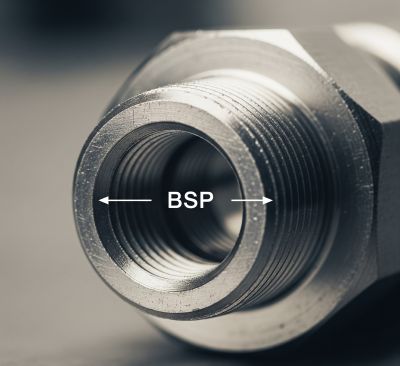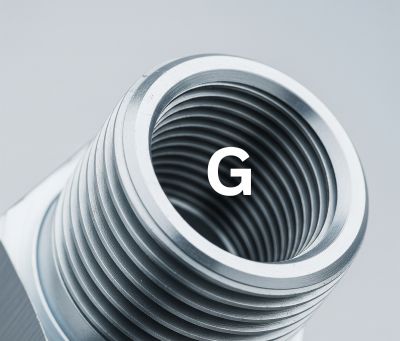When it comes to plumbing, mechanical assemblies, and industrial fittings, thread standards play a critical role. Using the wrong thread type can lead to serious problems, including leaks, mechanical failures, and costly downtime. That’s why it’s essential to understand the differences between commonly used thread types, especially BSP and G threads.
In this blog post, we’ll explore what thread standards are, dive into the specifics of BSP and G threads, highlight their differences, and explain why choosing the right thread standard is vital for any project.
What Are Thread Standards?
Thread standards define the shape, size, angle, and pitch of screw threads used to connect pipes, fittings, and other mechanical parts. These standards ensure compatibility between components manufactured in different locations or by different companies.
Thread compatibility is critical because mismatched threads can lead to leaks, mechanical failures, increased maintenance and repair costs, and potential safety hazards.
Some of the most common international thread standards include:
➡️ BSP (British Standard Pipe)
➡️ NPT (National Pipe Tapered – used in the US)
➡️ G (ISO 228-1 standard for pipe threads)
➡️ ISO Metric and other ISO thread forms
Understanding the correct thread type for your application prevents costly mistakes and ensures a secure, leak-free connection.
Introduction to BSP Threads
BSP stands for British Standard Pipe, a family of thread standards widely used around the world, especially in the UK, Europe, Australia, and South Africa.
There are two main types of BSP threads:
1. BSPT (British Standard Pipe Tapered): Threads are tapered for a tight, pressure-resistant seal.
2. BSPP (British Standard Pipe Parallel): Threads are parallel and typically require a sealing washer or O-ring to create a leak-tight connection.
Common Uses:
1. Plumbing systems
2. Gas fittings
3. Hydraulic applications
4. Industrial piping systems
Countries using BSP Threads:
1. United Kingdom
2. Australia
3. New Zealand
4. South Africa
5. Parts of Europe and Asia
Introduction to G Threads
G threads are based on the ISO 228-1 standard and are sometimes referred to as “BSPP” threads in casual use. However, technically, G threads are a distinct standard.
Key characteristics:
➡️ Always parallel (non-tapered).
➡️ Originally designed for gas and fluid connections in non-pressure-tight systems.
➡️ Sealing relies on a gasket, washer, or O-ring — not on the thread itself.
Common Applications:
1. Plumbing systems
2. Compressed air installations
3. Machine tool setups
4. Industrial fluid systems
G threads are particularly popular in European manufacturing and mechanical engineering industries.
Key Differences Between BSP and G Threads
The table below will show you the key differences between BSP and G threads:
|
Feature |
BSP Thread |
G Thread |
|
Taper/Parallel |
Tapered (BSPT) or Parallel (BSPP) |
Always Parallel |
|
Sealing Mechanism |
Thread sealant (BSPT) or washers (BSPP) |
Always requires washers or O-rings |
|
Standards |
BS 21, ISO 7-1 |
ISO 228-1 |
|
Applications |
Pressure-tight joints |
Non-pressure tight connections |
|
Appearance |
Similar appearance but different specs |
Similar appearance but tighter standards |
1. Taper/Parallel: BSP threads can be either tapered or parallel, offering flexibility for different sealing methods. G threads are strictly parallel and always require a mechanical seal.
2. Sealing Mechanism: BSPT threads seal via metal-to-metal thread contact with thread sealant. BSPP and G threads use a sealing washer or O-ring.
3. Standards: BSP follows British Standards (BS 21 and ISO 7-1), whereas G threads are governed by ISO 228-1.
4. Applications: BSP threads are often used where a pressure-tight seal is necessary, such as in hydraulic systems. G threads are better suited for low-pressure applications where an external seal is acceptable.
5. Appearance: To the naked eye, BSPP and G threads look similar, but the engineering tolerances differ, which affects interchangeability.
Thread Identification Tips
Visually identifying threads can be tricky, especially between BSPP and G threads. Here’s how you can differentiate:
➡️ Visual Inspection: Look closely, but be aware that both thread types look very similar.
➡️ Use Thread Gauges: A thread pitch gauge can help measure the thread pitch accurately.
➡️ Measure Diameter: Using calipers, you can measure the outside diameter of the thread.
➡️ Check Markings: Manufacturers sometimes stamp fittings with thread type codes (e.g., “G” for G thread).
Whenever in doubt, use a combination of these techniques to ensure correct identification.
Can BSP and G Threads Be Interchanged?
While BSPP and G threads are dimensionally close, they are not designed to be interchangeable in critical or high-pressure systems.
Risks of mismatching include:
1. Leaks
2. Mechanical failure
3. Warranty voids
4. Increased repair and maintenance costs
In low-pressure, non-critical applications, it is sometimes possible to mate BSPP and G threads successfully using proper sealing methods. However, this is not recommended for applications where pressure-tight integrity is essential.
Practical Applications and Industry Examples
You’ll find BSP and G threads across various industries. Here are a few real-world examples:
➡️ Hydraulic Systems (BSP): Hydraulic cylinders, pumps, and fittings often use BSP threads for pressure-tight seals.
➡️ Compressed Air Systems (G): Many air compressors and pneumatic equipment in manufacturing plants use G threads.
➡️ Water Supply Fittings (BSPP and G): Plumbing fixtures and industrial water supply fittings may use either BSPP or G threads, depending on regional standards.
Knowing where each thread type is commonly used helps in selecting the right fittings for your application.
Conclusion
Understanding the difference between BSP and G threads is essential to ensure safe, leak-free, and efficient mechanical assemblies. While they may look similar, their sealing mechanisms, applications, and technical standards differ significantly.
Always check thread specifications carefully before attempting to assemble parts, especially in critical or pressure-sensitive applications. When in doubt, refer to standard charts or consult a fittings specialist.
Post time: May-28-2025



